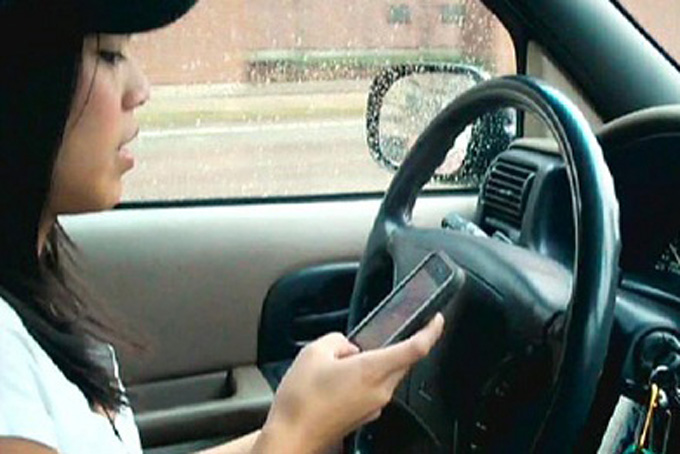
by Todd Sperry
(CNN) — Young drivers are getting the message that distracted driving can be deadly, but a new study released Monday reports drivers ages 16 to 21 put themselves at far higher risk when driving alone.
Peer pressure and high-profile anti-distracted-driving campaigns are having an impact, with more than three quarters of young drivers saying they don’t mind having to disconnect from electronics while driving.
But those solo trips without peer pressure or a parent present are when young drivers are increasingly susceptible to the distractions of electronic devices, the study, commissioned by Bridgestone and conducted by SurveyU, shows.
Ninety-five percent of survey participants said they’ve talked on their cell phones. Similarly, many say they’ve posted messages to social media websites, read e-mails and text messages, taken pictures and even watched videos while driving.
Sending or receiving a text takes a driver’s eyes from the road for an average of 4.6 seconds, the equivalent of driving the length of an entire football field, blind, at 55 mph, according to researchers at the Virginia Tech Transportation Institute.
The added distraction of drivers using smartphones has led to broad industry changes in an effort to reduce accidents. A variety of apps are available that block text messages and calls while driving. And reducing distracted driving has been a central issue for outgoing Transportation Secretary Ray LaHood, who has called distracted driving an “epidemic in America.”
In 2011, 3,331 people were killed in crashes involving a distracted driver, and 387,000 people were injured in motor vehicle crashes involving a distracted driver, according to Department of Transportation statistics.
“With this many new drivers engaging in distracted driving behaviors, it’s clear we have to continue to educate on the serious consequences that activity can have,” Angela Patterson of Bridgestone America said in a statement released with Monday’s results.
Similar to previous studies, Bridgestone’s survey indicated that a majority of young drivers have picked up bad driving habits from their parents. Among the other findings, nearly 25% of teens still said they don’t see talking on a cell phone while driving as unacceptable. And 37% said they had caught themselves daydreaming while on the road. Young drivers were most likely to admit to speeding while on highways, but 84% said they drove at or below the speed limit in school zones.
A majority of respondents believe their friends send texts and e-mails when driving, while only about one third admitted to doing the same.
But it’s not all doom and gloom for parents hoping to keep their kids safe behind the wheel. Nearly all young drivers said they wear their seat belts, and far fewer admitted to engaging in drag racing and drifting, the kind of dangerous driving done by previous generations.
Distraction.gov, the federal government’s flashy website dedicated to reducing distracted driving crashes, offers some clear advice: “The best way to end distracted driving is to educate all Americans about the danger it poses.”
